

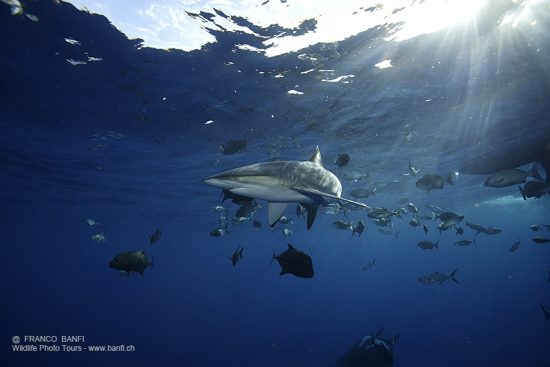
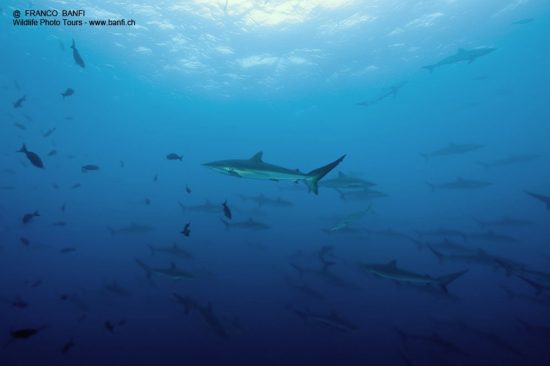
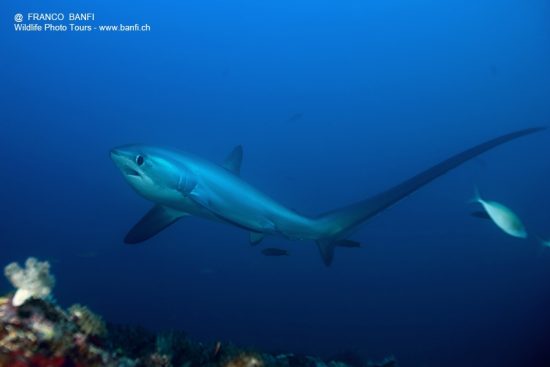
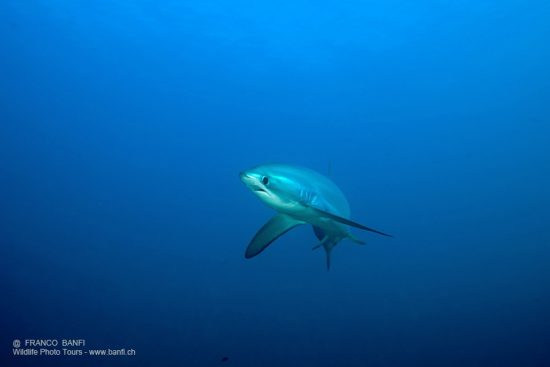
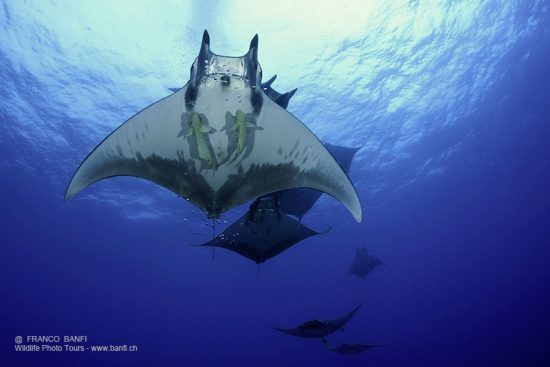
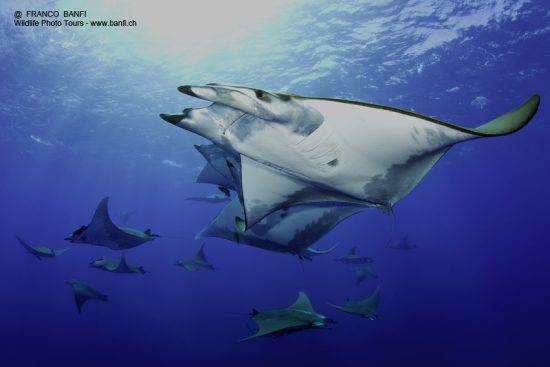
CITES voted yesterday (4th October) on proposals to list silky sharks, all three species of thresher sharks and all nine species of mobula rays on Appendix II. Really great news !!
We are all aware that sharks play an integral role in marine ecosystems and that many sharks have life-history characteristics that make them intrinsically susceptible to overfishing, international trade and at great risk for population depletion due to insufficient controls on exploitation. Many of us have personally seen the decrease of shark populations over the years during the dives we have done all around the world.
As of today, 18 shark and ray species are listed on Appendix I and II of the CITES. It took until 2003 to protect the first two shark species : whale sharks and basking sharks (appendix II); the great white followed in 2005 (appendix II); in 2013 hammerhead, dusky, oceanic whitetip sharks and manta rays were added (always appendix II).
Today, finally, this status was recognized by CITES even for silky sharks, thresher sharks and mobula rays, listed on Appendix II. This list does not prohibit trade, but rather should ensures trade is controlled in order to avoid use incompatible with the species’ survival. That means that these species are not yet considered threatened with extinction, but they may become so unless trade is closely controlled.
Proposal #42 added silky sharks while proposal #43 moved all three species of thresher sharks to Appendix II.
Silky and thresher sharks have shown declines of between 70 and 80% throughout their worldwide ranges, with local declines of more than 90%.
Silky sharks are listed as “near threatened” while all three species of thresher sharks species are listed as “vulnerable” on the IUCN Red List.
Silky sharks are the species most commonly caught as a bycatch (fish caught accidentally when targeting other species) in longline and purse seine
fisheries. There is targeted fishing for silkies as well, both for meat and for the shark fin trade.
This proposal drew strong support, with Mexico, Chile, Bahrain, the DRC, Jamaica, Ethiopia, New Zealand and Argentina speaking in support of
the proposal. Opposition came from Qatar, Japan, Nicaragua, Iceland and Indonesia, who believe sharks are best managed by regional fishery organizations rather than global regulations. Surprisingly, also the FAO -an organization concerned primarily with global food availability rather than the conservation of species - spoke against CITES' listing for silky sharks, preferring regional control of the species. Despite this opposition, the CITES membership won the match and silky sharks entered the Appendix II.
The dramatic and beautiful thresher sharks, with their long caudal fin, are highly prized in the shark fin trade, and are believed to be at the highest risk of extinction of all pelagic sharks. Annual takes of thresher sharks are difficult to determine, as many animals move secretly into the fin trade, but it is believed that well over one million thresher sharks may be harvested annually.
They generally mature late (female between 12 and 14 years) and only give birth to about two pups. Due to a lifespan of about 20 years and a 12 month gestation period, they will only produce about 10 pups during their life cycle.
Opinions for and against the thresher shark listing followed a similar pattern to the silky proposal, with opposition voiced by Iceland, Japan
and the FAO. But the CITES membership voted with a large majority to list thresher sharks on Appendix II.
Mobula (devil) rays are heavily commercially fished for their gill plates, which are used in Asian medicine, and the global trade in dried gill plates is reported to be more than 120 tons per year. Mobula rays have a very low reproductive rate, bearing a single pup every 2-3 years, and therefore have limited ability to recover from population declines. Proposal #44 placed all nine species of mobula rays on Appendix II. By secret ballot,
as requested by Japan, and despite opposition of the repetitive Iceland, Japan and Myanmar -but surprisingly not the FAO- the CITES membership voted positively and all species of mobula ray entered Appendix II.
All these submissions started their iter in 2015, when Sri Lanka, the Maldives and Fiji submitted the proposals, which were put forth in response to scientific evidence of global declines in these species. More than 50 countries have agreed to co-sponsor, listing one or more of these species, including several African nations.
 Franco and Sabrina
Franco and Sabrina 5th October 2016
5th October 2016 Johannesburg, Gauteng, Sudafrica
Johannesburg, Gauteng, Sudafrica